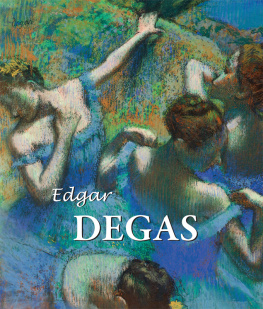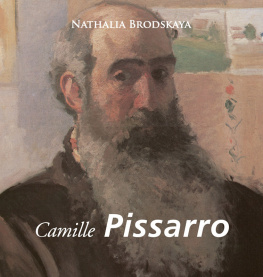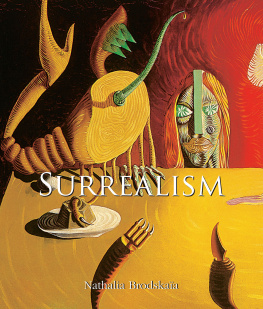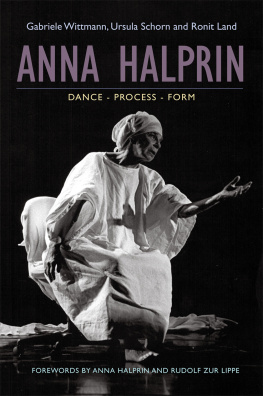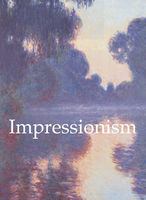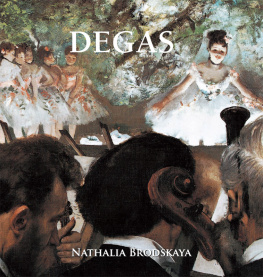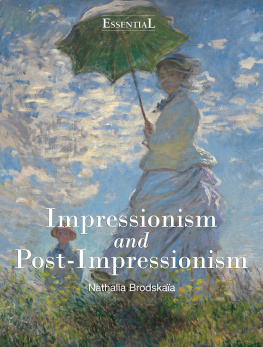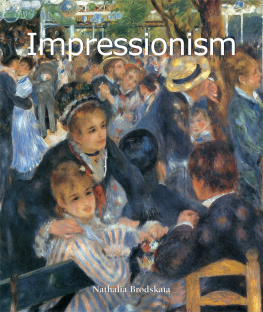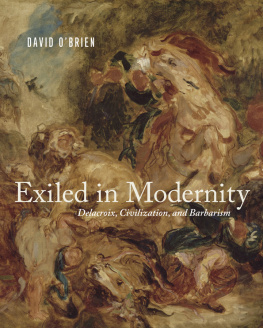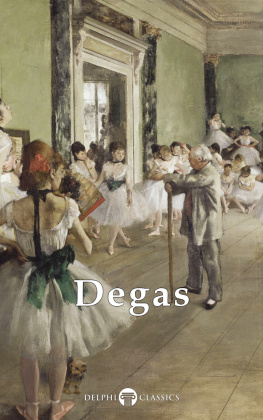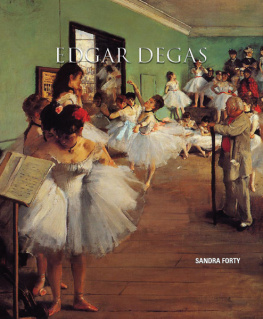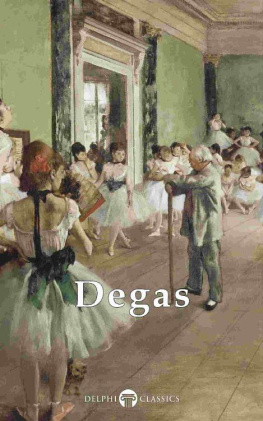Authors:
Natalia Brodskaa
Edgar Degas
Layout:
Baseline Co. Ltd
61A-63A Vo Van Tan Street
4 th Floor
District 3, Ho Chi Minh City
Vietnam
Confidential Concepts, worldwide, USA
Parkstone Press International, New York, USA
Image-Bar www.image-bar.com
All rights reserved.
No part of this publication may be reproduced or adapted without the permission of the copyright holder, throughout the world. Unless otherwise specified, copyright on the works reproduced lies with the respective photographers, artists, heirs or estates. Despite intensive research, it has not always been possible to establish copyright ownership. Where this is the case, we would appreciate notification.
ISBN: 978-1-78310-286-0
Natalia Brodskaa
Edgar Degas
EDGAR DEGAS

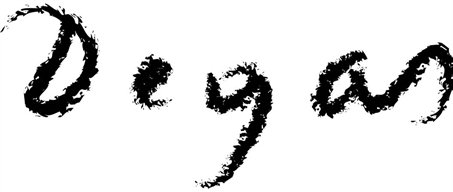
CONTENTS

Self-Portrait Saluting, 1865.
Oil on canvas, 92.5 x 66.5 cm .
Museu Calouste Gulbenkian, Lisbon.
EDGAR DEGAS AND
HIS WORKS

Young Spartans Exercising, c. 1860.
Oil on canvas, 109.5 x cm .
The National Gallery, London.
Edgar Degas was closest to Pierre-Auguste Renoir in the Impressionists circle, for both favoured the animated Parisian life of their day as a motif in their paintings. Degas did not attend Charles Gleyres studio; most likely he first met the future Impressionists at the Caf Guerbois. It is not known exactly where he met douard Manet. Perhaps they were introduced to one another by a mutual friend, the engraver Flix Bracquemond, or perhaps Manet, struck by Degas audacity, first spoke to him at the Louvre in 1862. Two months after meeting the Impressionists, Degas exhibited his canvases with Claude Monets group, and became one of the most loyal of the Impressionists: not only did he contribute works to each of their exhibitions except the seventh, he also participated very actively in organising them. All of which is curious, because he was rather distinct from the other Impressionists.
Degas came from a completely different milieu than that of Monet, Renoir, and Alfred Sisley. His grandfather Ren-Hilaire de Gas, a grain merchant, had been forced to flee from France to Italy in 1793 during the French Revolution. Business prospered for him there. After establishing a bank in Naples, de Gas wed a young girl from a rich Genoan family. Edgar preferred to write his name simply as Degas, although he happily maintained relations with his numerous de Gas relatives in Italy.
Enviably stable by nature, Degas spent his entire life in the neighbourhood where he was born. He scorned and disliked the Left Bank, perhaps because that was where his mother had died. In 1850, Edgar Degas completed his studies at Lyce Louis-le-Grand, and, in 1852, received his degree in law. Because his family was rich, his life as a painter unfolded far more smoothly than for the other Impressionists.
Degas started his apprenticeship in 1853 at the studio of Louis-Ernest Barrias and, beginning in 1854, studied under Louis Lamothe, who revered Jean-Auguste-Dominique Ingres above all others and transmitted his adoration for this master to Edgar Degas. Degas father was not opposed to his sons choice. On the contrary: when, after the death of his wife, he moved to Rue Mondovi, he set up a studio for Edgar on the fourth floor, from which the Place de la Concorde could be seen over the rooftops. Edgars father himself was an amateur painter and connoisseur; he introduced his son to his many friends. Among them were Achille Deveria, curator of the Department of Prints and Drawings at the Bibliothque Nationale, who permitted Edgar to copy from the drawings of the Old Masters: Rembrandt, Drer, Goya, Holbein. His father also introduced him to his friends in the Valpinon family of art collectors, at whose home the future painter met the great Ingres. All his life Degas would remember Ingres advice as one would remember a prayer: Draw lines Lots of lines, whether from memory or from life (Paul Valry, crits sur lArt [Writings on Art], Paris, 1962, p. 187).
Starting in 1854, Degas travelled frequently to Italy: first to Naples, where he made the acquaintance of his numerous cousins, and then to Rome and Florence where he copied tirelessly from the Old Masters. His drawings and sketches already revealed very clear preferences: Raphael, Leonardo da Vinci, Michelangelo, and Andrea Mantegna, but also Benozzo Gozzoli, Ghirlandaio, Titian, Fra Angelico, Uccello, and Botticelli. He went to Orvieto Cathedral specifically to copy from the frescoes of Luca Signorelli, and visited Perugia and Assisi. The pyrotechnics of Italian painting dazzled him. Degas was lucky like no other. One can only marvel at the sensitivity Edgars father demonstrated with respect to his sons vocation, at his insight into his sons goals, and at the way he was able to encourage the young painter. Youve taken a giant step forwards in your art, your drawing is strong, your colour tone is precise, he wrote his son. You no longer have anything to worry about, my dear Edgar, you are progressing beautifully. Calm your mind and, with tranquil and sustained effort, stick to the furrow that lies before you without straying. Its your own it is no one elses. Go on working calmly, and keep to this path (J. Bouret, Degas, Paris, 1987, p. 23).
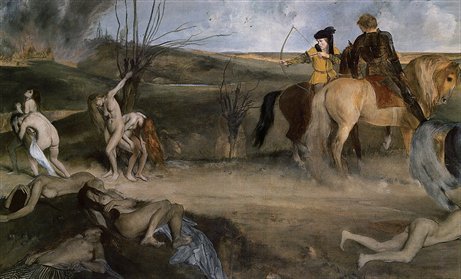
Scene of War in the Middle Ages (detail), 1865.
Oil on paper, on canvas, 83.5 x 148.5 cm .
Mu se d Orsay, Paris.
In 1855, Degas began to pursue studies at the cole des beaux-arts, but did not show any particular zeal for his work. Degas preferred to learn at the museums. As soon as his first vacation arrived, Degas took the opportunity to return to Italy. There, at the Villa Medici, fate brought him into contact with residents of the cole des beaux-arts who would become his friends: the painters Lon Bonnat, Henri Fantin-Latour, lie Delaunay, Gustave Moreau, the sculptors Paul Dubois and Henri Chapu, and the musician Georges Bizet, who had not yet composed Carmen. Their gatherings in the old neighbourhoods of Rome, and the picnics with the beauties of the Italian landscape in the background, would remain impressed on his memory to the end of his life.
In the 1850s, Degas started doing portraits and self-portraits. From the very beginning in Degas portraits, one senses an attentive observer of human psychology. In Italy he began to paint portraits of his family members. One of his very first is an admirable portrait of his grandfather, Ren-Hilaire de Gas, it is reminicent of Titians portraits to mind. Its professional quality and Degas ease in handling the idiom of classical painting makes it possible to compare it to portraits by Ingres. This canvas foretells a future for the painter as a great portraitist. And he indeed became a remarkable portraitist. During the 1850s Degas began to paint the portraits of members of the Bellelli family, that of his fathers sister, who had married Baron Bellelli. He did composition studies, sketched the baron and his wife, painted his own cousins Giulia and Giovannini, and studied the hands of his subjects. The result was a large painting 200 by 253 centemetres, and painted in Paris,
Next page
